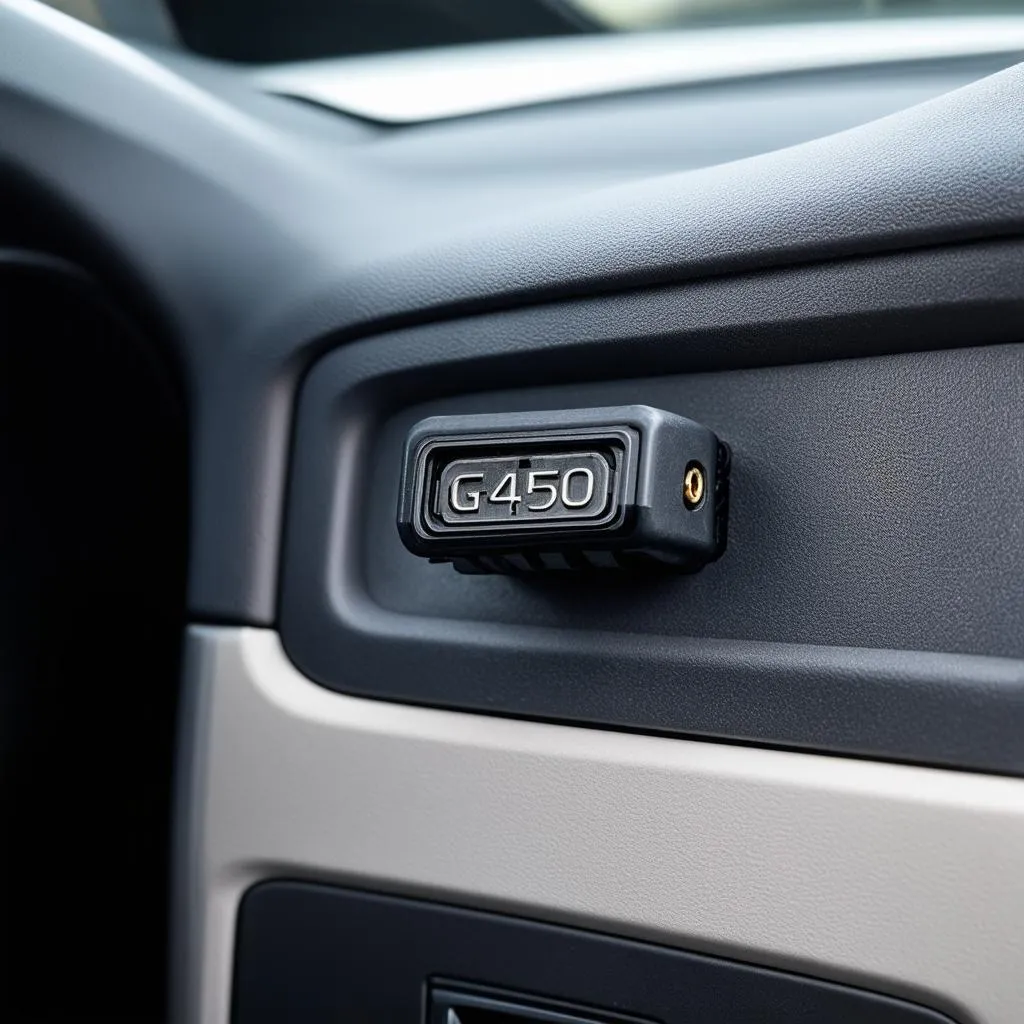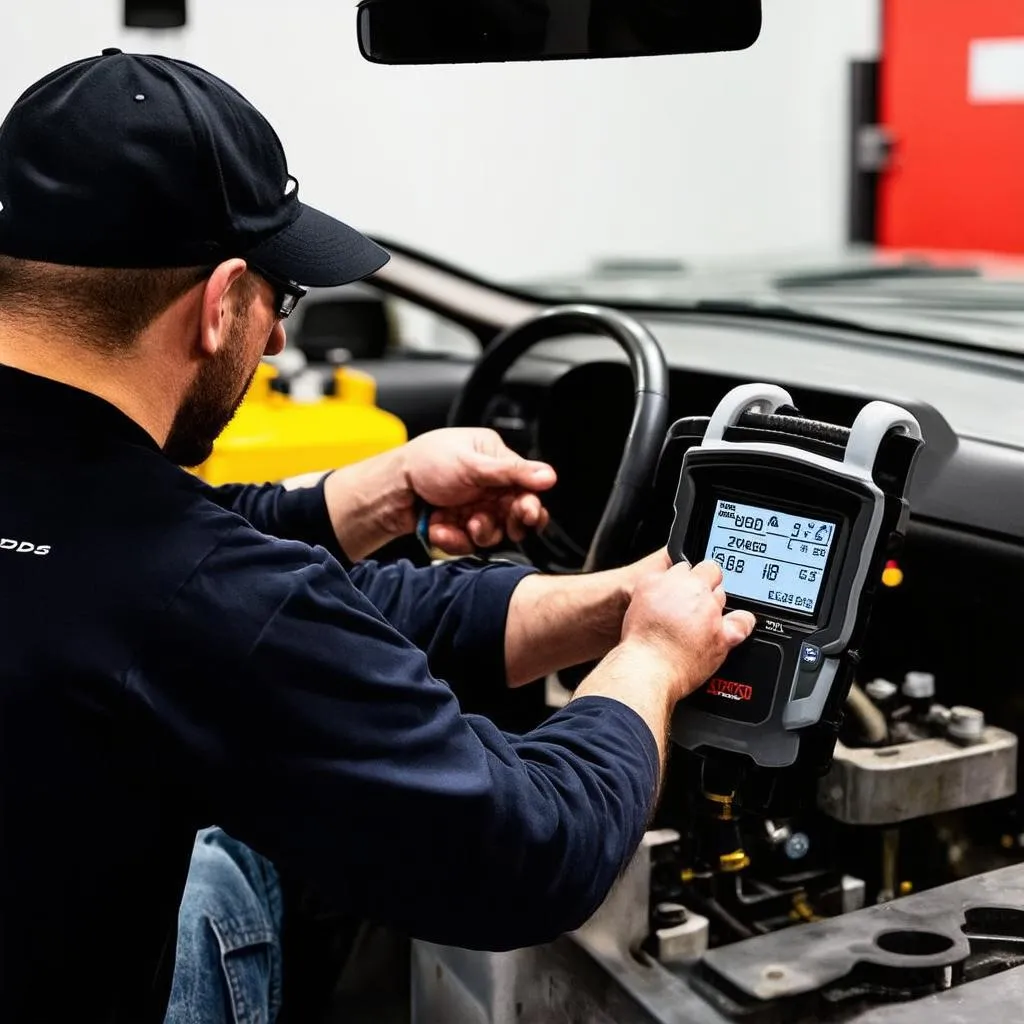Demystifying G450 Sensor Adaptation with VCDS: A Comprehensive Guide
“A well-tuned sensor is like a well-oiled gear – it keeps things running smoothly.” Remember that old mechanic down the street, Mr. Henderson? He always said that while patting his trusty wrench. He was onto something. In the intricate world of European cars, the G450 sensor plays a crucial role, and understanding its adaptation using VCDS can feel like unlocking a secret code. But fear not, fellow car enthusiasts, for we’re about to break it down, demystifying the process and empowering you to tackle it head-on.
What is G450 Sensor Adaptation and Why Should You Care?
Imagine driving down a winding road, the sun on your face, and suddenly your car feels… off. The steering wheel seems hesitant, the engine sluggish. This, my friend, could be a sign of a miscalibrated G450 sensor.
This tiny but mighty sensor, also known as the lateral acceleration sensor or yaw rate sensor, acts as your car’s inner ear. It measures the vehicle’s rotation around its vertical axis (yaw) and lateral acceleration, essentially telling the Electronic Stability Program (ESP) how the car is moving and helping it maintain control.
Now, VCDS, short for VAG-COM Diagnostic System, is your key to communicating with your car’s computer. It’s a powerful tool that allows you to access, diagnose, and adjust various systems, including the G450 sensor.
Why Adapt the G450 Sensor?
Simply put, adaptation is like calibrating the sensor. Over time, vibrations, minor accidents, or even component replacements can throw the G450 out of whack. This can lead to:
- Erratic ESP behavior: You don’t want your ESP kicking in unnecessarily, do you?
- Poor handling: That “floating” feeling when cornering? Yeah, not ideal.
- Reduced fuel efficiency: A confused sensor can confuse your car’s systems, impacting fuel economy.
 G450 sensor location
G450 sensor location
G450 Sensor Adaptation with VCDS: A Step-by-Step Guide
Before we dive in, remember that while this guide provides general instructions, specific procedures may vary slightly depending on your car model. Always consult your car’s repair manual or seek professional help if you’re unsure.
Here’s how to perform the G450 sensor adaptation using VCDS:
- Connect and Prepare: Connect your VCDS interface to your car’s OBD-II port and launch the software.
- Access the ESP Module: Navigate to the “Control Units” section and select the module related to your ESP system (usually labeled as “ABS” or “ESP”).
- Basic Settings: Look for an option like “Basic Settings” or “Adaptation” within the ESP module.
- G450 Adaptation: You should find a specific channel dedicated to the G450 sensor. Select it.
- Follow the Prompts: VCDS will guide you through the adaptation process, which usually involves turning the steering wheel or driving slowly in a straight line.
- Save and Exit: Once the adaptation is complete, save the changes and exit VCDS.
FAQs: Your Burning Questions Answered
Q: How often should I adapt the G450 sensor?
A: While there’s no set schedule, it’s generally recommended after any work done on the suspension, steering components, or ESP system, and if you experience any of the symptoms mentioned earlier.
Q: Can I damage my car by performing this adaptation incorrectly?
A: While the risk is low, it’s essential to follow the instructions carefully and consult your car’s documentation or a professional if you have any doubts.
Q: Are there any alternatives to VCDS for G450 adaptation?
A: Some professional-grade scan tools offer similar functionalities, but VCDS remains a popular choice among DIYers and enthusiasts for its versatility and user-friendly interface.
 Mechanic Using VCDS
Mechanic Using VCDS
Beyond the Technical: The Importance of Calibration in Life
Just as the G450 sensor needs regular calibration for optimal performance, so do we in our own lives. We need to pause, reflect, and recalibrate our internal compass to ensure we’re heading in the right direction. Whether it’s re-evaluating our goals, relationships, or simply taking time for self-care, regular “adaptation” is key to a smoother, more fulfilling journey.
Need Help with Your G450 Sensor or Other Diagnostics?
We’re here to help! If you have any questions or need assistance with your car’s diagnostics, don’t hesitate to contact us via Whatsapp at +84767531508. Our team of expert mechanics is available 24/7 to provide support and guidance.
Remember, a well-maintained car is a happy car, and a happy car makes for a happy driver!
Let us know in the comments below if you found this guide helpful, and don’t forget to share it with fellow car enthusiasts who might benefit from it!
